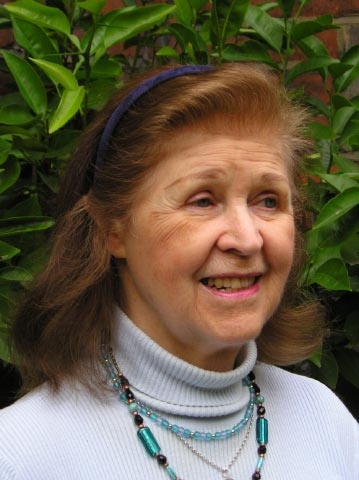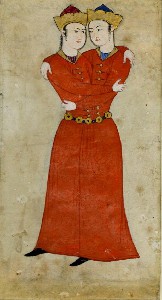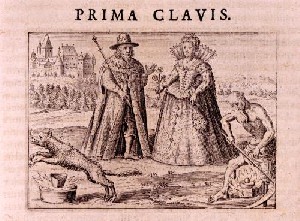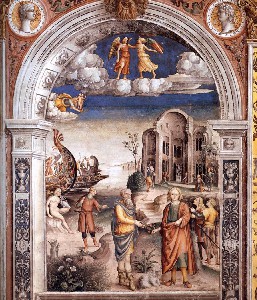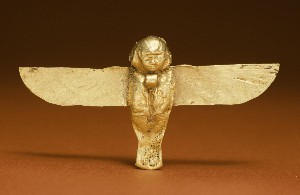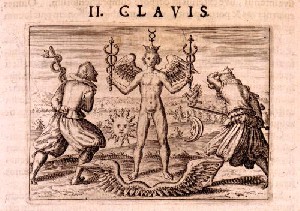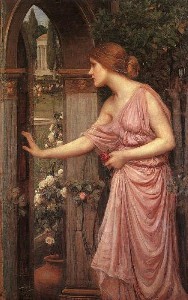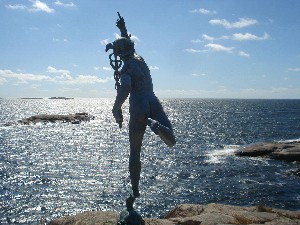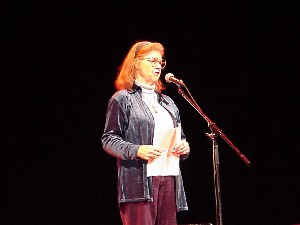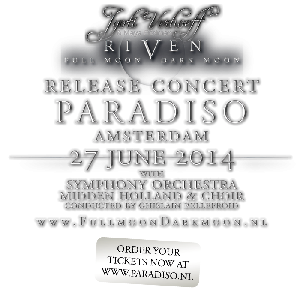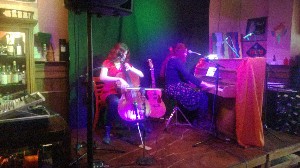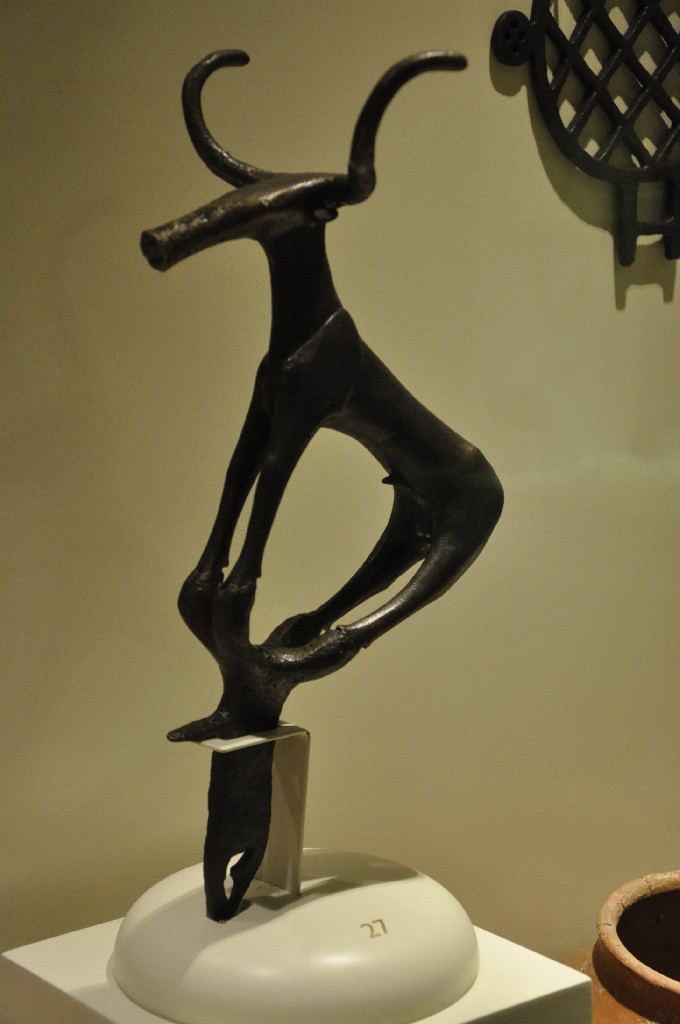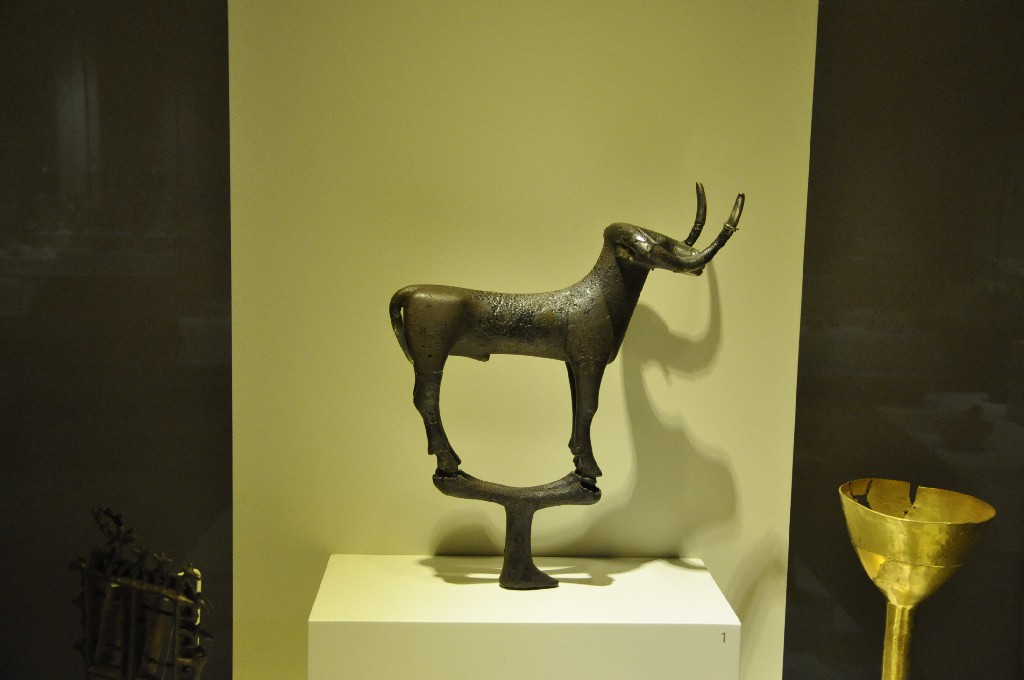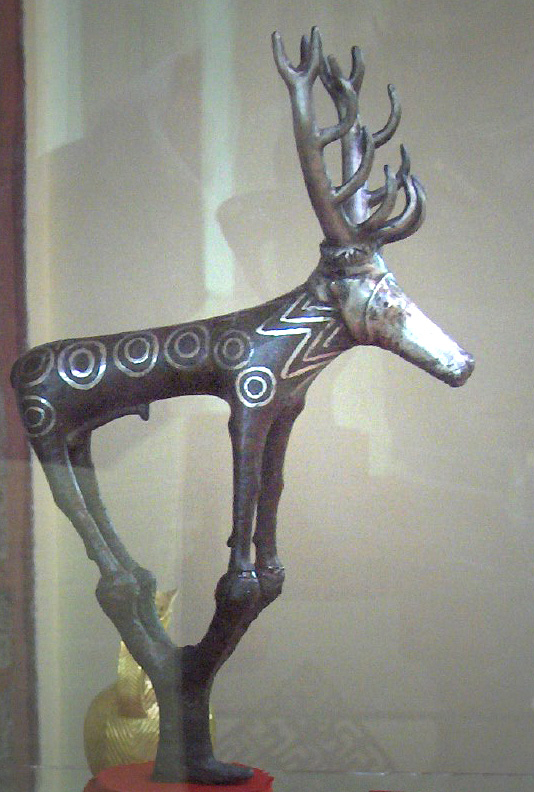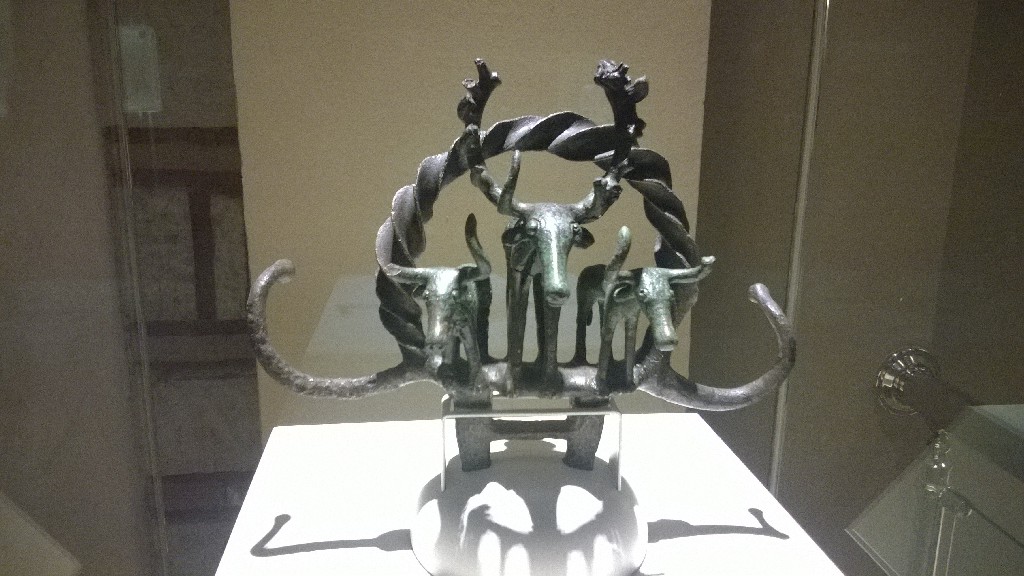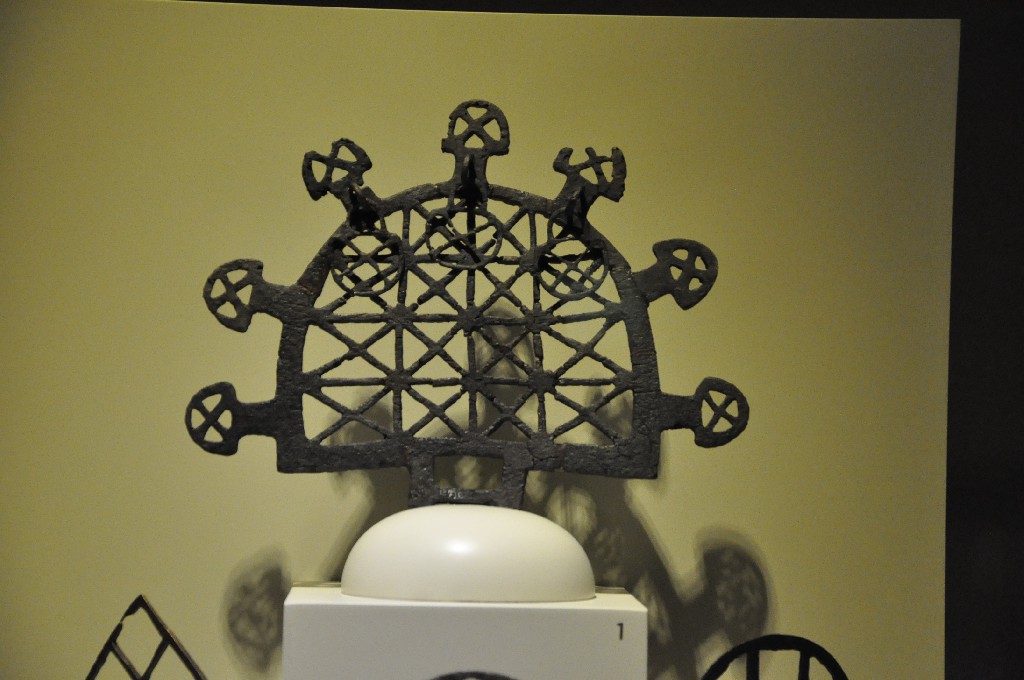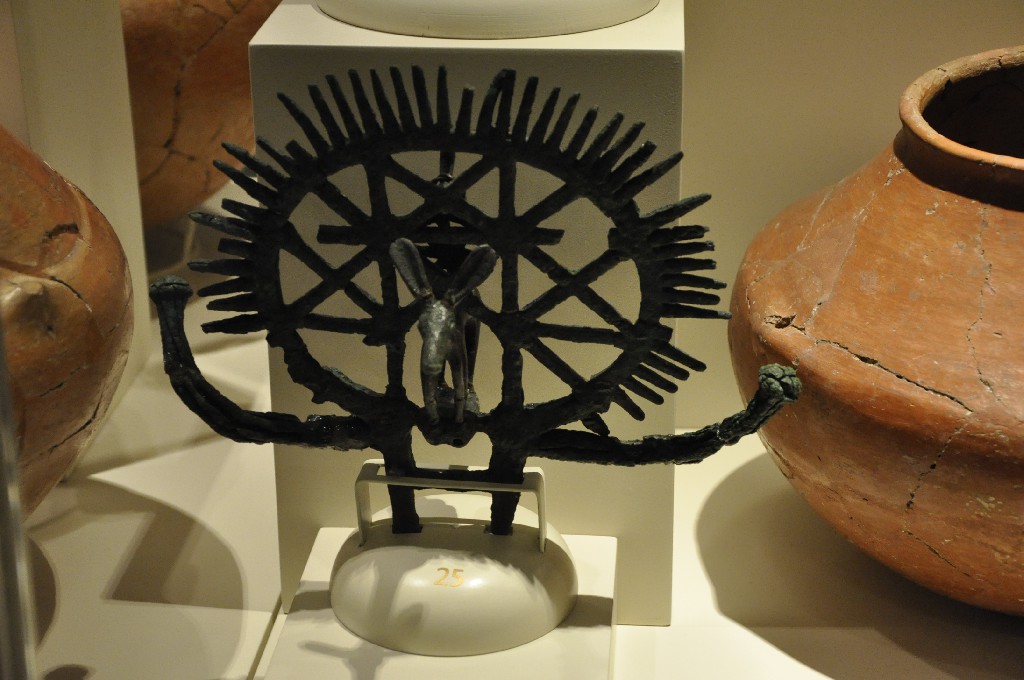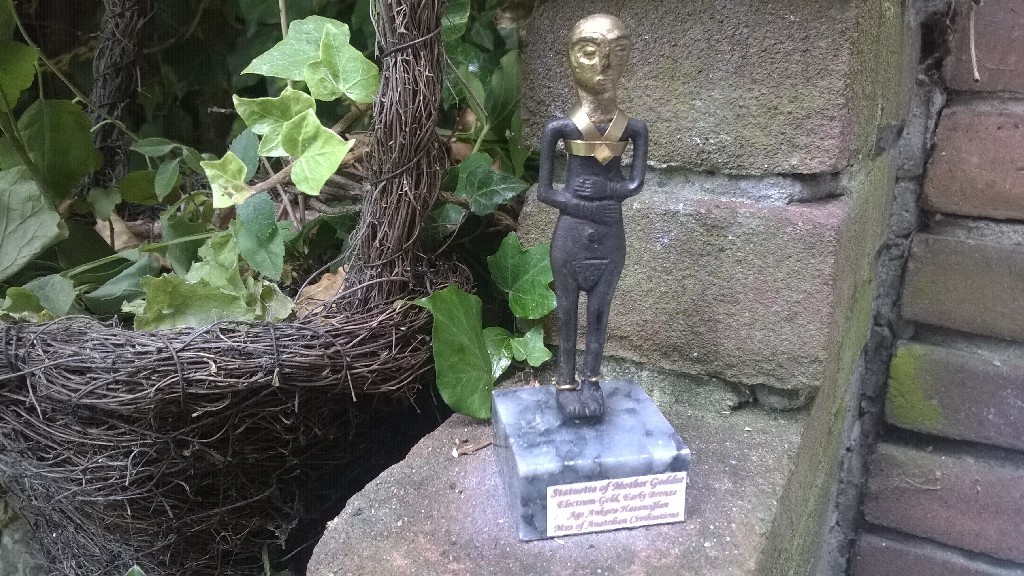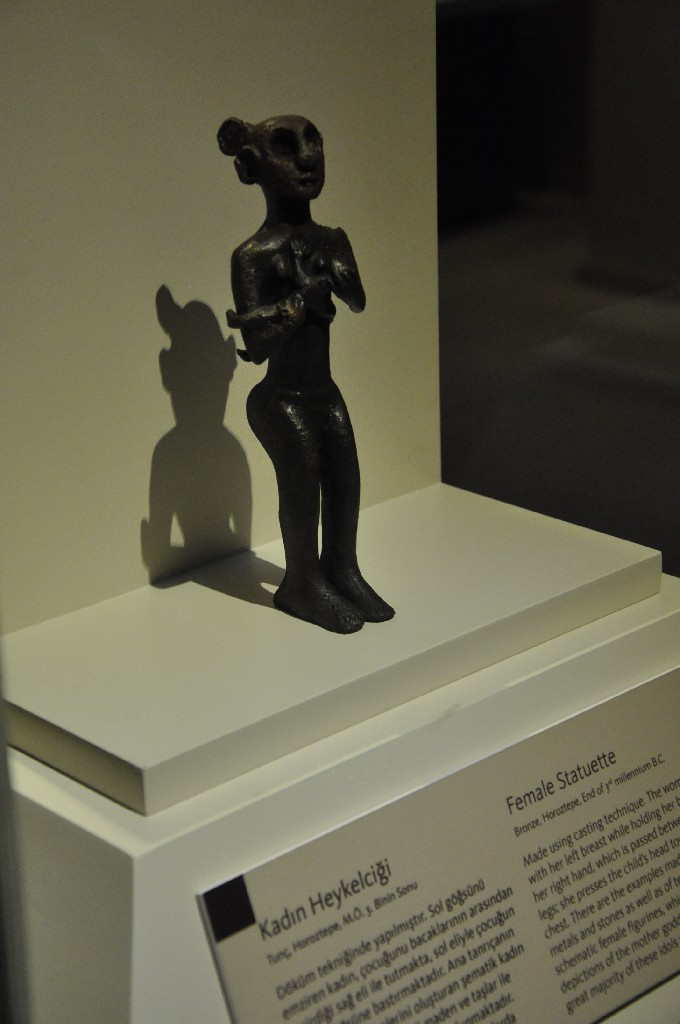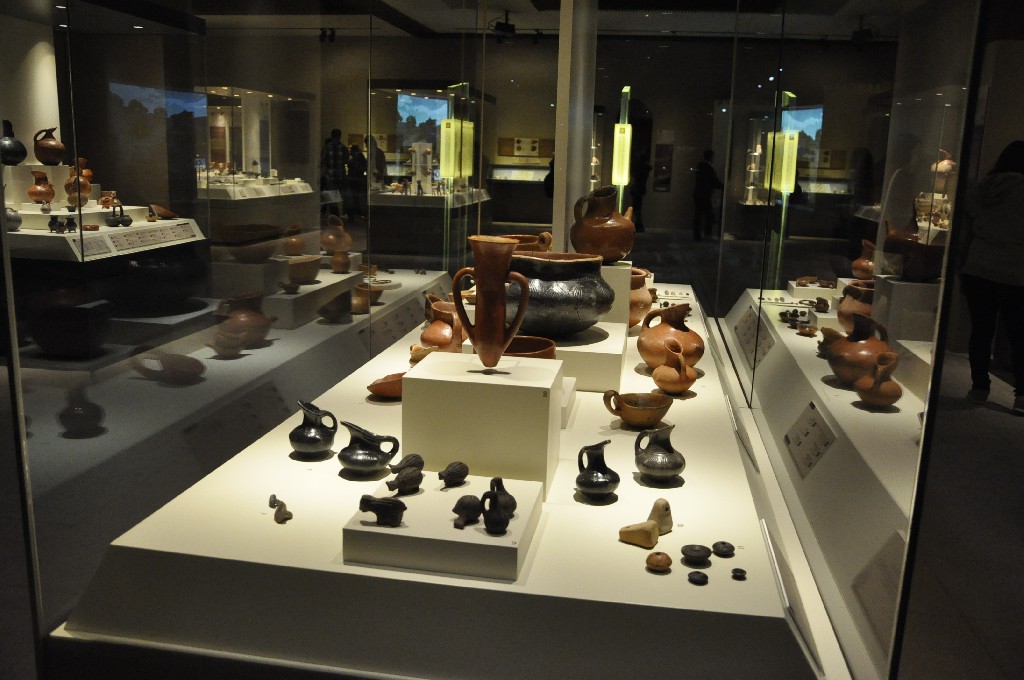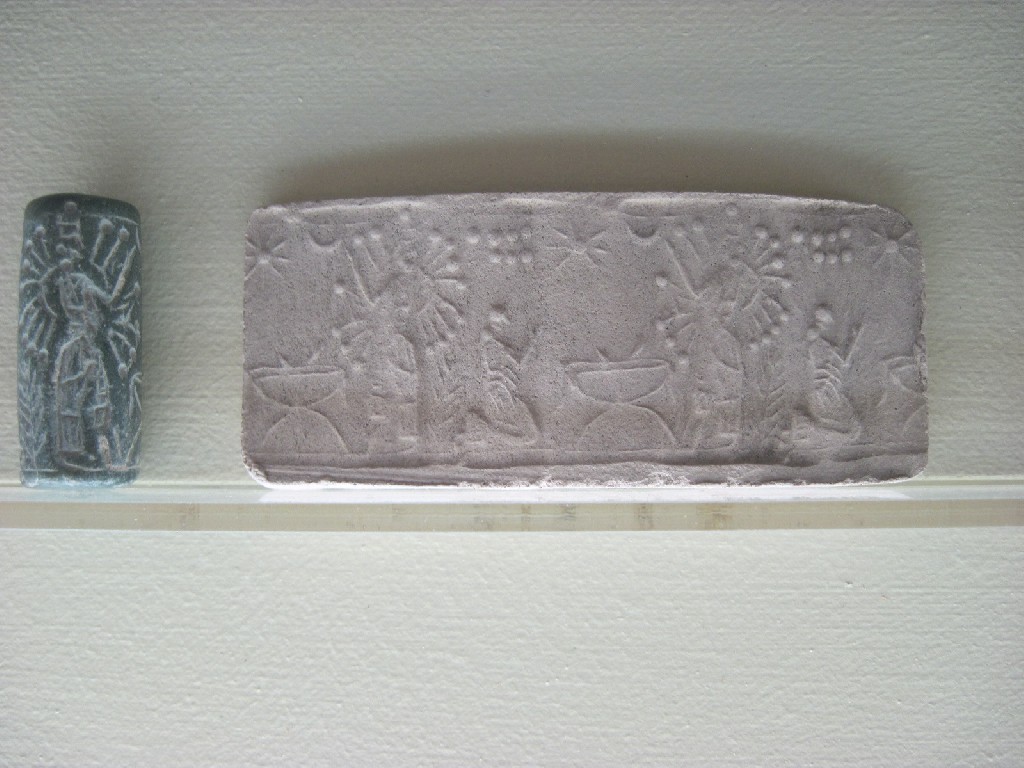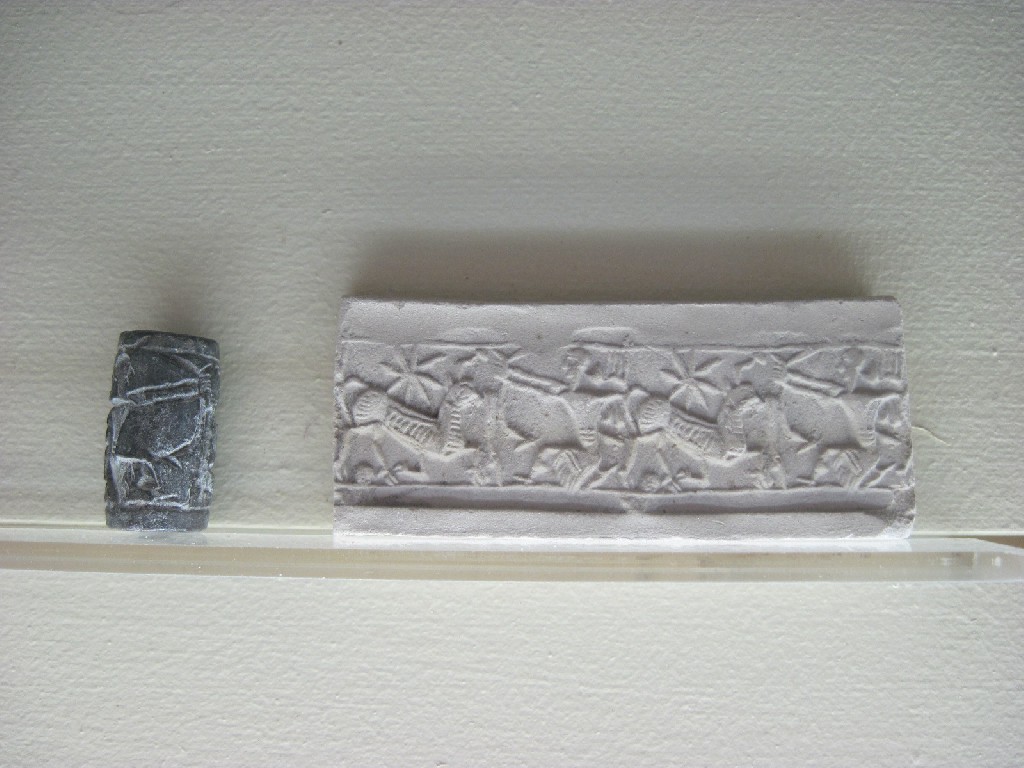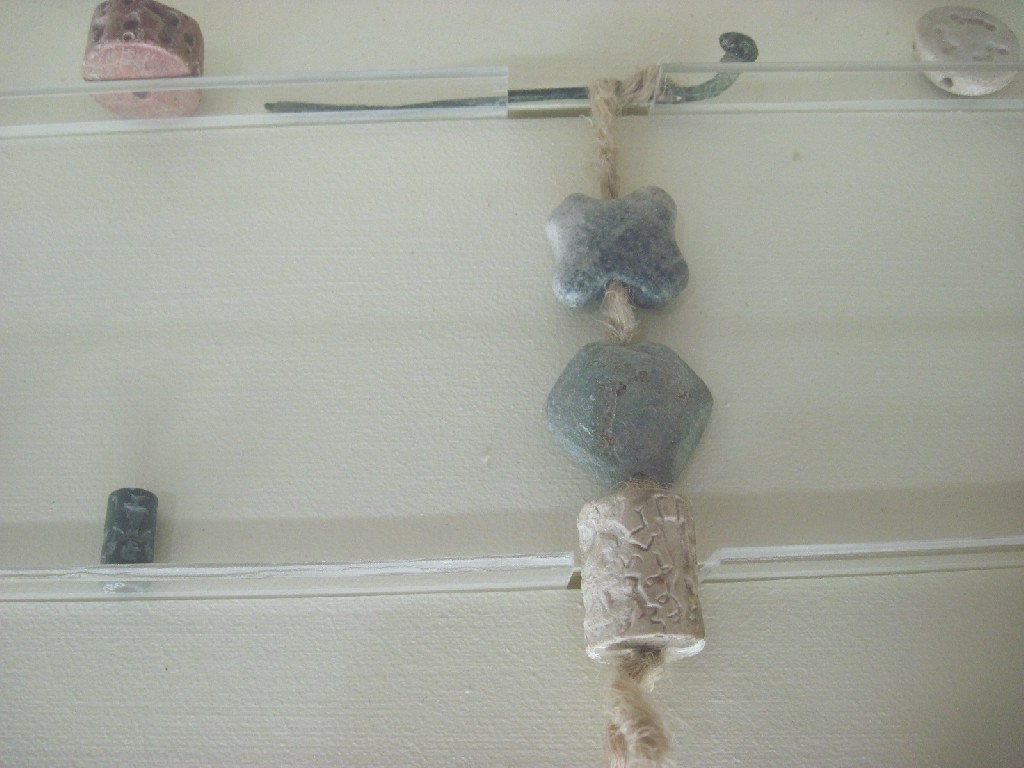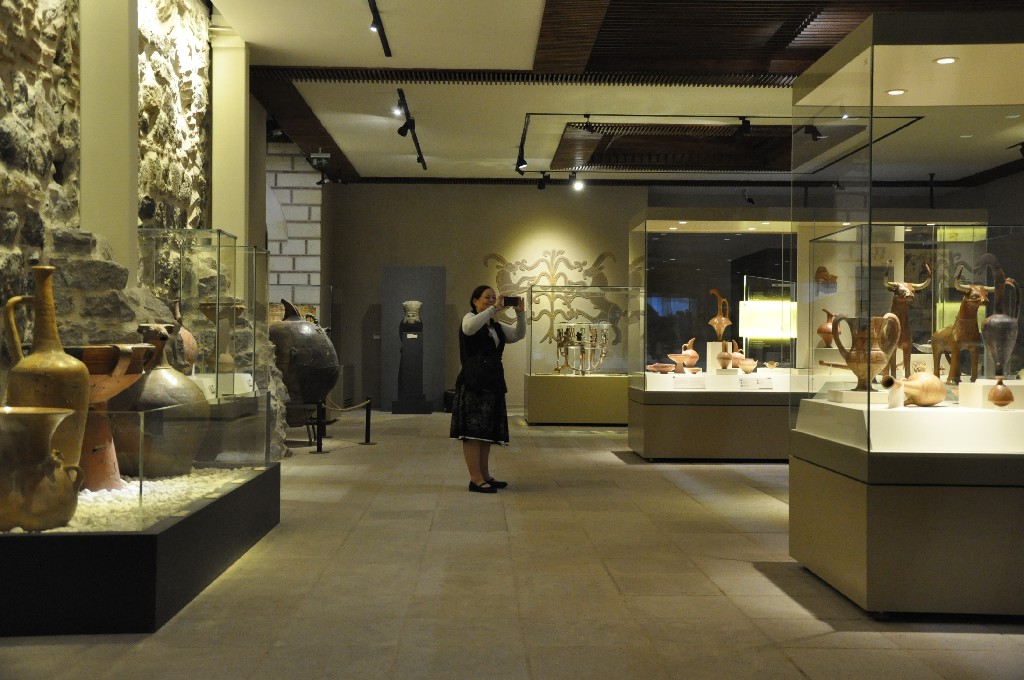By Luthaneal Adams
There is often a great deal of dissension over the issue of Wicca and initiation. Many people believe that you can be a Wiccan without initiating or that a person can perform a “self-initiation”, while others (mostly Wiccan) declare that initiation is definitely needed and that self-initiation is generally a ridiculous concept.
So which is it, really? In many ways a lot of this really does just boil down to one question:
Do you believe Gardner?
Once that question is answered, all other questions and answers slide firmly into place. Though it is ironic and perhaps somewhat fitting, that whether your answer is “yes” or “no”, we still arrive to the same destination. All that differs is the journey that is taken in getting there.
So, we’ll begin with this question and start of at the easiest answer: Do you believe Gardner?
“No.”
If you don’t believe that Gardner was really initiated into a coven of witches, with reference to Wica, as he claimed, then the situation automatically becomes very simple to resolve. For if he wasn’t really initiated, then that would mean that he created the entire religion himself (though using other sources as influences) and that there was no Wicca/Wica before him.
If this is the case then what can we take away from that? Well first of all we immediately get a distinct view onto what Gardner’s intentions for the religion really were. After all, he created it and he could make it anything he wanted. But in this scenario he made it a mystery religion, in which the only way to practice it was through initiation.
Obviously this is no accident. On the contrary, it is a direct reference for what he intended the religion to be and what he wanted it to be. If he wanted to make it open to everyone, then he could do, but he didn’t. He knew full well what a mystery religion was and had connections to a good few other initiatory organisations.
So from the view of Wicca originating only from Gardner, we can see directly that it was only ever intended for initiates.
But, we can’t just end it there. Though we will take a brief intermission to acknowledge that it is among the foremost opinions that Gardner was probably not initiated into a witch cult as he described and that he instead created Wicca from a combination of the folklore he knew, the influence of the works of Margaret Murray, the influence of OTO teachings, his personal interest in naturalism, Thelema and no doubt a good few other sources that I have neglected here.
It’s worth mentioning this here, as the works of scholars such as Ronald Hutton are not to be absently ignored. Indeed, Prof. Hutton has done extensive research in this area and indeed, in the area of studying historical witchcraft in general and remains the foremost expert on the subject today.
For further references to this line of enquiry and an examination of Prof. Hutton’s work, read his book Triumph of the Moon.
Now, with that said, let’s try and tackle the more difficult subject of examining Gardner’s intentions for Wicca, while allowing for the possibility that his own claims to initiation into a witch cult were true.
When approaching this, there are several angles that need to be considered: Who were these supposed witches and what was the nature of their craft?
What was Gerald Gardner’s relationship to them?
What was their view/tradition regarding initiation and the Wicca?
This last question is very relevant in that its answer will help us to understand not only the traditions that Gardner may have been following, but also the beliefs regarding initiation that were held by the first traceable followers of Wicca and just what initiation may have meant to them. Unfortunately we have no direct words from these witches (at least, not on matters of witchcraft) but we do have the words of Gardner and what he told us about them. But this will be sufficient, as we can all agree that Gardner is the root of the issue and it is his handed down practices that are being followed today.
But before anything, we must tackle that first question:
Who were these supposed witches and what was the nature of their craft?
The identity of the people of the New Forest Coven, to whom Gardner claimed his initiation, cannot be determined with absolute certainty. But although researchers both within and without Wicca have provided us with some very likely candidates, I’ll not spend too much time arguing the different ideas about who was who. For our purposes here it is enough to say that these witches, according to Gardner, had known him for a quite a while and that they lived in or around the area of the New Forest and Christchurch.
But what of their practices? Well Gardner has given us a fair amount of insight into their workings, from his initiation and onwards. For this we can refer to Gardner’s account per Bracelin:
“Gardner felt delighted that he was being let into their secret. Thus it was that, a few days after the war had started, he was taken to a big house in the neighbourhood. This belonged to ‘Old Dorothy’. It was in this house that he was initiated into witchcraft. He was very amused at first, when he was stripped naked and brought into a place ‘properly prepared’ to undergo his initiation.
It was half way through when the word Wica was first mentioned: “and I (Gardner) knew that that which I had thought burnt out hundreds of years ago still survived.
I soon found myself in the circle and took the usual oaths of secrecy which bound me not to reveal any secrets of the cult.”
In just this short account we are able to gather a wealth of information to help us.
We know from this that the practices of these witches were kept secret, so much so in fact that Gardner didn’t even know what he was being initiated into until he was already half way into initiation. We now also know that if these witches existed as Gardner claims, then they definitely had rites of initiation that were needed to be undergone in order to be “let into the secret”. Perhaps more significant though, is that these witches referred to themselves as Wica.
Now, Gardner’s reaction to the word shows us that he was familiar with the old term and its connotations. However, it also implies that both he and they were unaware of how it was pronounced back in the Anglo-Saxon. This leads us to one of two possible conclusions here:
1) Either the pronunciation of the word had changed among this line of witches, so that now it was a different and new word, which now obviously only referred to them.
2) Or, that the word Wica, as used by them, didn’t actually have any connection to the old Anglo-Saxon and so it was still only relevant to them and their practices.
Either way we have a situation in which we have already established that their practices were secret and required initiation, and that the word Wica/Wicca can only refer to their secret hereditary practices.
One could use this alone as a case to drop the subject here and now, acknowledging that Gardner simply maintained this tradition of initiation and secrecy. But there is a lot more information available to us with which we can build a more complete picture as to exactly what their practices were in regards to initiation.
But first, let us stay on the matter of secrecy and examine the answer to our second question:
What was Gerald Gardner’s relationship to these witches?
Well, if we take Gardner at his word, then we already know that he was initiated by them and so thusly he and they were coven mates. But before we look into Gardner’s relationship with them as an initiate, we would probably do well to take a moment to examine their relationship before initiation. As Bracelin records:
“I would have gone through hell and high water even then for any of them.”
– Gerald Gardner on his feelings for the New Forest Coven even before being initiated into them (source: Gerald Gardner: Witch, by Jack Bracelin).
Obviously Gardner felt very strongly for these people and as researchers like Phillip Heselton have shown us in their works, Gardner had a long association with these witches and that this close relationship was built over time. But exactly how close was this relationship?
“I fell in love with a witch when we were fire-watching together during the war.”
– Gerald Gardner to Ralph Merrifield, Deputy Director of the Museum of London, upon asking Gardner where he had learnt his witchcraft.
It is clear to see that Gardner had very strong feelings for the first of these witches that he encountered and although it seems reasonably clear that no lasting romance existed between himself and the afore mentioned witch (probably Edith Woodford Grimes), we do know that he did maintain an extremely close friendship with her and her family, even giving away her daughter at her daughter’s wedding. This event is listed in official records.
It is important to understand at this point that Gardner’s initiation wasn’t taken lightly. No, these witches had known him for a long time and never even mentioned the Craft to him. They kept him in the dark all the while.
We have a picture being painted here. Gardner kept it no secret that he had an interest in the occult and folklore, yet these witches never at any point before initiation even so much as mentioned the Wicca to their good friend. This alone speaks to its secrecy, but it also speaks of what is required for initiation, both then and now. The witches needed to be absolutely comfortable with him and to truly feel that they could bring him into the fold.
Initiation requires trust and love. These things develop over time.
But the nature of their relationship remains an important key in many regards, even after his initiation.
We have seen that secrecy is a necessity to these witches and those oaths were taken that their secret information should not be revealed. But as we know from the existence of his books, Gardner (already a published author), wished to share the existence of the cult with other people via his books.
By all accounts it seems to have been Gardner who broached the subject with them, regarding publishing information on the Wicca and by all accounts they were opposed to the idea.
“I wanted to tell of my discovery. But I was met with a determined refusal. ‘The Age of Persecution is not over’, they told me, ‘give anyone half a chance and the fires will blaze up again’. When I said to one of them, ‘Why do you keep all these things so secret still? There is no persecution nowadays!’ I was told, ‘Oh, isn’t there? If people knew what I was, every time a child in the village was ill, or somebody’s chickens died, I should get the blame for it. Witchcraft doesn’t pay for broken windows.”
– Gerald Gardner, Witchcraft Today
However, there was eventually a compromise made, as Gardner was given permission to publish some information, but only if it was in the form of fiction. This, of course, leads us to his first book on Wicca, which was called “High Magic’s Aid”.
The witches seemed to be okay with this work of fiction and so followed his book Witchcraft Today.
By his own account he went to great lengths to keep secret information out of the book, not just because it was a matter of oath, but because he had so much love and respect for his friends in the New Forest Coven:
“In writing this book, I soon found myself between Scylla and Charybdis. If I said too much, I ran the risk of offending people I had come to highly regard as friends. If I said too little, the publishers would not be interested. In this situation I did the best I could.”
– Gerald Gardner, The Meaning of Witchcraft, referring to his earlier book, Witchcraft Today.
It would seem that the witches were pleased enough with High Magic’s Aid and that later they allowed for a little more flexibility when he came to write Witchcraft Today. However, they were also adamant that no secrets were to be revealed in the book. Perhaps they had seen that his works could be a positive medium to keep their name clean. Gardner quotes of them:
“Write and tell people we are not perverts. We are decent people; we only want to be left alone.”
– Anonymous witch, quoted by Gerald Gardner in Witchcraft Today.
Gardner seems more than happy to honour this request, both to give Wicca a good name and to ensure that they are just left alone. Indeed, Gardner never personally reveals the identity of any member of the New Forest Coven, except by using pseudonyms.
“Now, I simply won’t let my friends, the people who trusted me, be bothered and badgered about”
– Gerald Gardner, 1952 (source: Wiccan Roots, by Philip Heselton)
This, once more, goes to show the close levels of trust and respect that exist within a coven, but it also goes to show that Gardner had respect for their tradition of secrecy and understood their need for it.
But it is deeper than that. In Witchcraft Today, Gardner informs us that in the beliefs of the Wicca, the need for initiation and secrecy goes far beyond a simple fear of persecution:
“witches have a firmly rooted belief in their own powers, and the danger of these being misused if uninitiated people learn the methods. Also, they revere their Gods, and do not wish their names to be known, or bandied about and mocked.”
– Gerald Gardner, Witchcraft Today
Indeed, even today the names of the Wiccan God and Goddess are not revealed to the uninitiated and they are not known to the public. One could argue that this alone makes for a difficult case in regard to uninitiated practice. Fore it is difficult to worship the deities of the Wicca, when you don’t even know who they are.
So we can see that the need for initiation exists as an act of devotion and respect for the Gods of the Wicca, but also in order to keep their magical secrets and rites from being practiced by those who may misuse them.
I am reminded of the Wiccan Rede: “An it harm none, do as thou will.”
Gardner tells us this is the morality of the witches and so it would seem that initiation is also a means to limit potential magical harm. “They do not wish it to be known how they raise power.
– Gerald Gardner, Witchcraft Today
It would seem fair to conclude that this reverence for the divine and desire to do no harm is as true today as was in Gardner’s day. So it is no great surprise that the tradition of initiation is maintained and the inner mysteries of the Wicca remain hidden.
“If I were to disclose all their rituals, I think that it would be easy to prove that witches are not diabolists; but the oaths are solemn and the witches are my friends. I would not want to hurt their feelings. They have secrets which to them are sacred. They have good reason for their secrecy.”
– Gerald Gardner, Witchcraft Today
Good reason indeed. And as a man who was more than familiar with mystery religions, he surely understood better than most.
But as a friend and initiate himself, he respected these secrets and maintained them.
Okay, so we have established quite well that secrecy and initiation were very sacred to the Wicca (assuming they existed before Gardner), but we can even go deeper than that.
Earlier I asked the question: What was their view/tradition regarding initiation and the Wicca?
Well we have already explored a lot of their views and traditions in this regard, but the views so far regard the meaning of being initiated as opposed to being uninitiated. But through Gardner’s words we can also explore the meaning and purpose of initiation within the Wicca. Gardner tells us:
“We ever pick out those who have a little inherent power and teach them, and they practice one with the other and they develop their powers.”
– Anonymous witch, quoted by Gerald Gardner in Witchcraft Today.
“It is no use trying to develop these powers unless you have time and a suitable partner.”
– Gerald Gardner, Witchcraft Today
“They say that witches by constant practice can train their wills to blend this nerve force, or whatever it is, and that their united wills can project this as a beam of force, or that they can use it in other ways to gain clairvoyance, or even to release the astral body.”
– Gerald Gardner, Witchcraft Today
“Being initiated into the witch cult does not give a witch supernatural powers as I reckon them, but instructions are given, in rather veiled terms, in processes that develop various clairvoyant and other powers, in those who naturally possess them slightly. If they have none they can create none. Some of these powers are akin to magnetism, mesmerism and suggestion, and depend on the possibility of forming a sort of human battery, as it were, of combined human wills working together to influence persons or events at a distance. They have instructions in how to learn to do this by practice. It would take many people a long time, if I understand the directions aright to a witch it is all MAGIC [Gardner’s emphasis], and magic is the art of getting results. To do this certain processes are necessary and the rites are such that these processes may be used. In other words, they condition you. This is the secret of the cult.”
– Gerald Gardner
Gardner quite implicitly tells us that one of the key parts of Wicca involves working with your coven and that this is the belief of the witches who initiated him. Indeed, he lets us know quite clearly that not only does the Wicca have secrets, but that their secret practices require a coven – they cannot be done without one.
”To do this certain processes are necessary and the rites are such that these processes may be used. In other words, they condition you. This is the secret of the cult.”
The secret rites of Wicca open up a person’s personal power and unite it with that of their coven. These rites teach and condition the individual to become stronger and more capable in this regard. To practice them requires a coven and these practices remain a secret of the Wiccan priesthood.
Okay, so we have explored the beliefs of Gardner as they were allegedly handed down to him by the New Forest Coven, and they quite clearly state that one must be initiated. The reasons for this are due to reverence for the Gods, personal protection, limiting potential harm and also because the rites of the Wicca are specifically designed to be utilised by a coven.
We also established earlier that “Wicca”, as a word, can only possibly apply to these practices. But when considering these practices in the way that we are, it would be sensible to consider whether any other witches out there may have passed down the teachings of the Wicca.
Again, we can explore Gardner’s own words: “They are the people who call themselves the Wica, the ‘wise people’, who practice the age-old rites and who have, along with much superstition and herbal knowledge, preserved an occult teaching and working process which they themselves think to be magic or witchcraft.”
– Gerald Gardner, Witchcraft Today
Okay, so according to Gardner the witches of the New Forest were following a religious path that had been handed down for a very long time. It would be fair to assume that over the course of that tradition, that religion had undergone some gradual changes that would make it unique, even if other lines existed elsewhere. The two would now be separate and different. Prof. Ronald Hutton does well to evidence that the existence of hereditary witchcraft dating back to ancient times is utterly unlikely and more than not such claims can be seen to be inaccurate at best, or just untrue at worst. So the idea of one such tradition surviving like this to modern day is unlikely let alone several identical traditions spanning from the same source.
But we need not speculate about this, once more we can quote Gardner: “To them the cult has existed unchanged from the beginning of time, though there is also a vague notion that the old people came from the East”
– Gerald Gardner, 1954 (source: Wiccan Roots, by Philip Heselton)
Here we can see that although they claim to have practiced an unbroken tradition, things have definitely been lost along the way, if only with regard to history.
Gardner also says: “My great trouble in discovering what their beliefs were is that they have forgotten practically all about their God; all I can get is from the rites and prayers addressed to him.”
– Gerald Gardner, 1954 (source: Wiccan Roots, by Philip Heselton)
Of course, Gardner is not implying that these witches do not know about their own God or that they don’t know who he is. Indeed, in the same quote Gardner is confirming that the passed down rites and prayers reveal who he is.
What Gardner is referring to is the history of the God and the religion. The witches essentially don’t know where they came from or who the first people were that worshipped their God. He confirms this later as he continues to explore their beliefs: “The witches do not know the origin of their cult.”
– Gerald Gardner, 1954 (source: Wiccan Roots, by Philip Heselton)
It is actually interesting to note that Gardner tends to move back and forth between the words “cult” and “religion” when he speaks of the Wicca. But it isn’t very hard to see why. He reveals to us in Witchcraft Today that he believes the Wicca to be a dying cult and by all accounts it seems he was probably correct. Those identified as his coven mates were aging quickly and in no rush to initiate others into their line. By all accounts it seems that Gardner’s initiation was a rarity and that Wiccan covens were few and on the decline, with members dying within his lifetime.
He has been quoted as saying: “How wonderful to think that these things still survive”
– Gerald Gardner (Source: Gerald Gardner: Witch, by Bracelin)
However, he was of the opinion that its survival was coming to an end and the idea of that was something that he didn’t want to entertain. This was the reason that he wanted to make the existence of the Wicca publicly known, so that he could quicken it.
But as we can see above, there were certain problems. Firstly the witches didn’t want too much to be known about their ways (a wish that Gardner honoured) and secondly they didn’t have a very clear understanding of their own history. Indeed, Gardner is quoted by Doreen Valiente as saying that the teachings that were handed down to him were fragmented and that he filled in the gaps himself.
(Source: Witchcraft for Tomorrow, by Doreen Valiente).
However, we can see that Gardner (if he is taken at his word) had a strong motivation to reveal the existence of Wicca to the world, but he was also obliged to keep it a secret. So we have a rock and a hard place situation.
But as he says in Witchcraft Today, he worked with what he could, revealing a few basics of the religion, but making initiation a necessity to maintain its secrets just as it was taught to him.
Gardner even goes to great lengths to maintain the traditional practices of initiation:
“The witches tell me: “The law always has been that power must be passed from man to woman or from woman to man, the only exception being when a mother initiates her daughter or a father his son, because they are part of themselves”. (The reason is that great love is apt to occur between people who go through the rites together.)”
Man to woman and woman to man remains the tradition by which initiations take place. But in this quote is also outlines another belief that makes initiation important. It is a transference of power an energy exchange. The power of one witch to another.
Gardner effectively made the change from cult to religion. Although the beliefs of the Wicca before Gardner (still assuming there were any) would technically be defined as religious beliefs, the actual religion had been denigrated to the status of a small cult and a dying one at that. Gardner revived it and took in from the status of cult up to recognised religion.
But we have to remember that regardless of anything, it is his religion. As has been shown, the teachings were fragmented, the history has been lost and all the original members from before Gardner are now long dead. All that remains is what Gardner learnt and what Gardner created from it. So nobody can lay claims to the teachings of Wicca, unless they came via him.
Gardner made Wicca initiatory and he made it so that the real teachings would only ever be revealed to those that were initiated. This practice maintains today by all those that have followed him in his lineage.
But this is not merely a matter of protecting secrets. No, it is also a matter of keeping a promise that Gardner made long ago. If the New Forest Coven existed, Gardner swore oaths to them that he would keep their secrets. This was the promise of a witch, but more importantly, it was the promise of a friend.
Initiation honours this promise and honours the promise of every Wiccan that has ever been initiated. With each new person the promise grows as each new person takes on the responsibility of upholding it. It is an issue of trust and of love.
Eclectic Wicca?
It’s established then, I feel, that the case has been made for the necessity of initiation in Wicca, whether based on pre-Gardnerian ideas or just upon those of Gardner. But how then to address the idea of “eclectic Wicca” and “self-initiation”.
Well, let’s deal with the easy one first: Self Initiation.
“Self-initiation” is technically an incorrect term, but it is one that you may run into from time to time.
Initiation is a gift of acceptance. To be Initiated means that that a group that you don’t belong to is welcoming you into their fold. It is the opening of a door by another person and inviting you to step through.
You couldn’t declare yourself a Catholic Priest and you couldn’t give yourself a Knighthood. Initiation is the same; it is something that other people give to you, not something that you can give to yourself.
What people often refer to as “self-Initiation” is more correctly termed as a Dedication. This is when a person in a solitary capacity declares that they are going to follow a certain path or certain Gods, often by performing a personal ritual.
Dedication Rituals are absolutely fine for the solitary practitioner and a very good way to give your path a sense of personal meaning and structure, as well as an outspoken declaration to the Gods.
But a dedication like this does not make one a member of Wicca.
Referring back to Gardner, it is interesting to note that he doesn’t really refer to Wicca as a religion; instead he tends to refer to Wicca as a group of people.
This is actually very true to form for both Gardner and ancient Pagan religions. Today “Wicca” is often applied offhandedly to name or describe the religion, but in the strictest sense the religion itself doesn’t really have a name. Although Gardner may reference to Wicca and its beliefs, his implication is that Wicca is the people, not the beliefs and that those who are initiated become Wicca.
As I mentioned, this mirrors the practices of older Pagan religions. In ancient times, it was quite rare to name a religion; however certain groups within that religious community would have names. For example, the Celts didn’t really have a collective name for their religion; however the Druids acted as priests. Not everyone following those Gods and those practices was a Druid. No, Druids were specifically a priesthood of law keepers, lore keepers and advisers. The other people simply went by the name of their tribe. Equally, all of Athens may have paid worship to Dionysus, but there was no name for this “religion”. However, there were the Eleusian Mysteries, but that was a title specifically for the initiated members of that sect.
Wicca is the same. “Wicca” isn’t really the name of the religion, per sé, that is just simply how the religion has become known through ease of speech. But the word “Wicca” is a specific name for that priesthood. In all truth those outside the priesthood that choose to follow the same Gods, don’t actually have a name, but that doesn’t mean that they can just offhandedly take the name of the Priesthood if they aren’t in it.
A Wiccan is a member of the Wicca priesthood.
Gardner certainly seemed to recognise the distinction. When he spoke of Wicca, he did so not in a reference to a religion, but in regards to the people who were initiated into it and that practiced the initiatory rites of that priesthood.
Of course, there are those who, when considering solitary or eclectic practice, like to bring up the root word of “wicca” and “wicce”. I’ve explained before why these words aren’t really applicable in the sense of Wicca, but of course people can be free to use them at their leisure.
These words are simply the old Anglo Saxon for “witch” and although it would be very odd to regress back into such a linguistic anachronism, it is the choice of the individual to do so if they so choose.
However, it must be pointed out that the words “wicca” and “wicce” are not the same as Wicca and do not mean the same thing. Firstly, both words are pronounced “witch-a” and not “wicka”, so when saying these words you sound totally different. Secondly, if you are using the words properly, then only a male can use the word “wicca” and a female has to use the word “wicce” when writing them. They are the sexual definers of the word and the correct way to use them.
But again, neither “wicca” nor “wicce” are in any way the same as Wicca, nor do they in any way imply a practice that is similar to Wicca. In actuality, the implication is that they describe something totally different from Wicca, as one would expect that if an old word is being used, then it is being used to describe something old. Wicca isn’t old and so the words “wicca” and “wicce” can’t be describing it.
Moving onto the subject of “eclectic Wicca” it is proper to examine the grammar of such a phrase.
The word “Wicca” is a noun. It is the name of a priesthood.
The word “eclectic” is an adjective and in this case defines the way in which one approaches Wicca, or implies that Wicca is the sphere within which one is eclectic.
Eclectic means to borrow freely from many different sources. That isn’t what Wicca is. Wicca is a defined religion that exists within a structure of practices and beliefs. Wicca is not eclectic.
If the term is taken to mean that one is eclectic within the confines of Wicca, then that becomes extremely problematic for the non-initiate. Being as there is only a very small amount of Wicca available to the public and it is often mixed up with things that aren’t Wicca at all, it becomes very hard to pick and choose eclectically and still retain a viable practice that is even slightly like Wicca. Basically, you would be taking a very small amount of available information and then skimming it down to even less. This would effectively make it even less Wicca than it was before.
In short, the term is a grammatical anomaly and makes no great sense.
It’s surely hard enough to practice a religion when you don’t know what it is. Practicing such a religion eclectically only makes it further from the target.
Evolution in Wicca
I have seen that there is common habit to suggest that non-initiated Wicca is in some way an evolution of Wicca, making it better and more than it was. Perhaps this is an ironic statement, being as non-initiatory practices only remove from Wicca and in actuality what they remove is the vast majority of the religion’s teachings and beliefs.
It is very difficult to see this as a positive evolution.
But the other problem with this view of Wicca “evolving” outside of initiation is that it completely reveals the ignorance of the real evolution that Wicca is undergoing by somehow suggesting that initiatory traditions are in some way static and unchanging. But the reality is quite to the contrary. That much is clearly evident by the fact that there are now initiated traditions beside Gardnerian Wicca, even though they all derive from Gardnerian Wicca through initiation.
But of course, the other evolutions within Wicca would require an intimate understanding of the real religion.
But we can once again listen to the words of Gerald Gardner, via Fred Lamond, to gain a little understanding as to how the priesthood progresses together: “Gerald was always at pains to tell us: “The Book of Shadows’ is not a Bible or Koran, but a personal ‘cookbook’ or spells that the individual witch has found to work. I (Gerald) am giving you my book to copy to get you started: it contains the spells and rituals that worked for me. As you gain in experience, add the successful spells that you have made up, and discard those that didn’t work for you!”-Fred Lamond, 50 Years of Wicca
I feel it is important at this point to explain what is being said here.
As has been discussed earlier, Gardner’s Book of Shadows is a secret text that defines the core of Wicca and every initiate copies it. It is the basis of Wiccan practice, beliefs, ritual, magic and tradition. As such it is the “core book” if you will and remains unchanged and the fundamental basis for all Wiccans within a coven.
The last line in the quote explains the practice of forming your own coven workings and magics, experimenting with the inner secrets of Wicca and finding what works for you. These things are recorded in a Wiccan’s personal Book of Shadows and those things that did not work a left out of their personal Book of Shadows. Again, the Gardnerian Book of Shadows is not changed; it forms the basis of the religious rites and the starting point for the individual within a coven and the coven entire.
Without access to the Book of Shadows and a coven with which to practice the rites within it, one cannot practice Wicca. As Gardner explained in our earlier quotes, a coven is necessary and the rites rely on a coven.
Wicca is also an experiential religion and requires the group on that level, as the rites are performed.
It has already been outlined that the rites that make up the core basis of what Wicca is, require a coven in order to be performed. But in this the coven becomes doubly significant. As an experiential religion the understanding of the mysteries derives from group practice and communal sharing.
The ritual space is sacred and those within it in many ways become one in their workings. Each person in the coven is an intrinsic part of the whole and each adds their energy, mind, power and understanding to the rites, then through this combined essence and inner unity, the mysteries become manifest and are explored.
The group is essentially a singular and united consciousness that exchanges freely between those within it and in that they become of the same essence.
This is the truth of Wicca, whether one believes it was created by Gardner or not. These are the practices, these are the beliefs. The secrets and majority of the religion are hidden and no one on the outside can practice them because of this. No one on the outside is Wiccan.
Wicca is the named priesthood of this faith. This is how it was created, either by tradition or intent, and this is how it remains today.
© Luthaneal Adams 2008
References:
Ronald Hutton: – Triumph of the Moon – Oxford University Press, 2001, ISBN 9780192854490
Gerald B. Gardner: – Witchcraft Today – Literary Licensing, LLC, 2011, ISBN 9781258175979
– The Meaning of Witchcraft – Red Wheel/Weiser (March 1, 2004) ISBN 978-1578633098
– High Magic’s Aid – AURINIA BOOKS (July 26, 2010) ISBN 978- 978-0956618207
Philip Heselton: – Wiccan Roots Capall Bann Pub (November 2001) ISBN 978-1861631107
– Gerald Gardner And the Cauldron of Inspiration: An Investigation into the Sources of Gardnerian Witchcraft – Holmes Pub Grou Llc (November 30, 2003) ISBN 1861631640
– Witchfather : A Life of Gerald Gardner, Volume 1 – Into the Witch Cult – Thoth Publications (June 1, 2012) ISBN 978-187045080
– A Life of Gerald Gardner Volume 2. From Witch Cult to Wicca – Thoth Publications (June 1, 2012) ISBN 978-1870450799.



